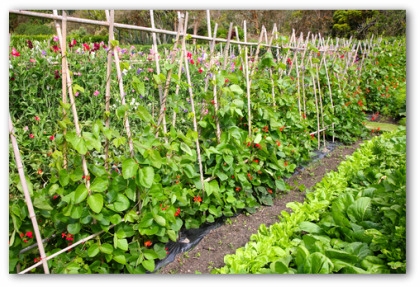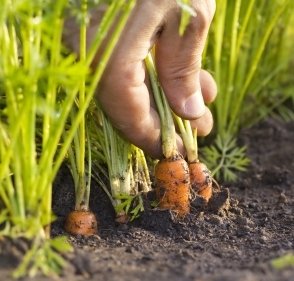Nemasys Fruit and Veg Nematodes
£8.99
| Quantity | Price | 1 | £8.99 |
|---|---|
| 2+ | £7.99 |
Nemasys Fruit and Veg Nematodes (F&V) are the natural solution for insect pests in your vegetable garden – protect your fruit and veg from a range of insect pests with one simple, chemical-free treatment. This unique mix of different nematodes will protect your fruit and veg from the main insect pests including carrot root fly, cabbage root fly, cutworms, onion fly, sciarid fly, caterpillars, gooseberry sawfly, thrips, and codling moth. Nemasys F&V Nematodes are safe to use on food crops, is suitable for use on organic crops and it will not harm pets, children, wildlife or bees. Nemasys F&V Nematodes work at temperatures above 12°C/40°F, so apply UNDERGLASS all year round or apply OUTDOORS during the growing season i.e. between March and October. It is a perishable product (it will keep for 2 weeks in the fridge), so order when you are ready to apply. Nemasys F&V Nematodes SINGLE Pack (2 weeks control) treats 60 sqm. N.B. Available NOW or insert a future date below.
N.B. Need a Coarse Rose, NemaCan Watering Can, EasyNem Applicator or Hose-end Feeder – Add one to your basket and save £1.00 off a Coarse Rose OR save £2.00 off a EasyNem Applicator , Hose-end Feeder or NemaCan when bought with your nematodes (savings applied at the checkout).
Full Description
This unique mix of different nematodes will protect your fruit and vegetables from the main insect pests including carrot root fly, cabbage root fly, cutworms, onion fly, sciarid fly, caterpillars, gooseberry sawfly, thrips, and codling moth. NemasysFruit and Veg Nematodes are safe to use on food crops, is suitable for use on organic crops and it will not harm pets, children, wildlife or bees. Apply Nemasys F&V Nematodes to the soil with a watering can / hose end feeder to control soil based insect pests (soil temp of 12°c required) OR apply with a sprayer to control caterpillars and thrip and continue to apply while the pests are active. Nemasys F&V Nematodes is supplied in sachets as a powder, which is mixed with water and each pack will treat up to 60sqm/70sq yds (to treat a smaller area just make the solution stronger as it is impossible to overdose).
- To control soil based pests – Apply Nemasys F&V Nematodes at 2 weekly intervals throughout the growing season. Order Nemasys® F&V individually or we recommend the TWIN PACK (2 packs per delivery), giving 4 weeks control (use one and pop the other one in the fridge to use 2 weeks later) and save money too.
- Control caterpillars including Box Tree Caterpillars and sawfly – Apply Nemasys F&V Nematodes 3 times at 7 day intervals when the the caterpillars are 1st spotted and re-apply as necessary to keep caterpillars at bay. We supply in a triple pack (3 packs per delivery – apply 3 times at 7 day intervals).
- Controlling Codling Moth – Apply Nemasys F&V Nematodes TWICE at 2 weekly intervals in Sept / Oct to target the larval stage. Spray the tree and drench the ground under the tree. Order Nemasys F&V Nematodes as a TWIN PACK (2 packs per delivery) – use one pack ASAP and pop the other one in the fridge to use 2 weeks later and save money too :-
Nemasys F&V Nematodes SINGLE Pack(2 weeks control) treats 60 sqm
Nemasys F&V Nematodes TWIN Pack – 2 Packs sent together (giving 4 weeks control – use one at a time at 2 week intervals) each pack treats 60 sqm SAVING £2.00
Nemasys F&V Nematodes TRIPLE Pack – 3 Packs sent together for controlling caterpillars and sawfly (apply 3 times at 7 day intervals) each pack treats 60 sqm.
How is it sent? – Nemasys F&V Nematodes are a perishable, living product, so it is sent out fresh by Royal Mail 1st class post. Being a perishable, living product, it must be used before the expiry date (which is marked on the inside of the pack and will be at least 2 weeks) and it must be stored in the fridge until it is needed. Once opened, the contents do not keep, so it must be used in one day – do NOT store the made up solution or powder. 1 or 2 packs will go through your letterbox and should be popped in the fridge as soon as possible – they are fine on the doormat while you are at work. N.B. Large orders i.e. 5 or more large packs will not fit through the letterbox, so someone will need to be in to receive it.
How to apply? – Apply to the soil with a watering can or nematode applicator to control soil based insect pests OR apply with a sprayer to controlling caterpillars and thrip.
|
PEST |
DESCRIPTION |
HOW AND WHEN TOU TREAT |
|
Carrot Root Fly |
A widespread pest of carrots, parsnips, celery, celeriac & parsley causing tunnels in the roots. Carrot Root Fly can be a particularly problem in old established gardens where the pest builds up each year. It lays eggs in the soil adjacent to the plant, the eggs hatch out and the 9mm yellow/white maggots burrow into the roots. The maggots stay in the ground over winter, pupate and the life cycle starts again in the spring. Two further generations can appear during the year. |
Apply as a drench after sowing and repeat fortnightly throughout the growing season. |
| Cabbage Root Fly | A pest of all brassicas (cabbages, cauliflowers, etc) and root vegetables (turnip, swede and radishes). The fly lays eggs in the soil near the plants and when the eggs hatch the maggots feed on the plant roots. Older plants may survive an attack, but grow slowly and wilt on sunny days. Cabbages often fail to heart and cauliflowers form a tiny heads. Brassicas are particularly vulnerable as seedlings, as they can be be killed by the maggots. The maggots eat the fine roots and just leave a rotting stump, or when roots are swollen as in radish, swede and turnip, they will bore into the roots leaving an inedible mess. |
Apply as a drench after sowing and repeat fortnightly throughout the growing season. |
| Onion Fly | Attacks onions, leeks, shallots and garlic. The eggs of the onion fly are white and are laid near the base of the plant or in the leaves. In early summer the eggs hatch and the maggots attack the roots causing them collapse and die. In late summer a second generation feed on the swelling onion bulbs causing them to rot. The severity of attacks varies from year to year but, in a bad year, it is almost impossible to grow these crops. |
Apply as a drench after sowing and repeat fortnightly throughout the growing season. |
| Box Tree Caterpillars | These caterpillars feeds on box plants causing severe defoliation and produce large amounts of webbing. As the caterpillars feed, areas of dieback may appear, which will be especially apparent on trimmed plants. Box Tree Caterpillars are greenish-yellow with black heads and once fully grown the caterpillars reach up to 4cm in length and will have a thick black and thin white stripes along its body. It overwinters as a caterpillar, hidden between leaves that have been spun together with silk. In the spring, the moths appear. |
Apply 3 times as soon as the caterpillars are first seen (normally May). Repeat 3 times at 7 day intervals. Re-apply as needed to keep the box plants free of caterpillars. |
| General Caterpillars | Occur from spring to early autumn. Caterpillars can decimate a vegetable plot, especially brassicas PLUS they love ornamentals such as roses. The caterpillars feed on the outer leaves leaving holes and can completely strip leaves. |
Apply 3 times as soon as the caterpillars are first seen (May – September) applying to all leaf surfaces. Repeat 3 times at 7 day intervals. |
| Gooseberry Sawfly | This pest attacks gooseberries and red and white currants and can strip them of all leaves. Gooseberry Sawfly Caterpillars are up to 20mm long, pale green with two of the species being heavily marked with black spots. Damage starts mid to late spring, but there can be several generations in a season. Apply as soon as the caterpillars are first seen applying to all leaf surfaces, making sure the spray comes into contact with the caterpillars. |
Apply 3 times as soon as the caterpillars are first seen (normally May) applying to all leaf surfaces. Repeat 3 times at 7 day intervals. |
| Cutworms | Cutworms are soil-dwelling caterpillars of several species of moth. The can be up to 40mm long and are creamy-brown, greenish-brown or greyish-white in colour. They emerge in June / July and feed on vegetables, fruit and ornamental plants. A second generation then hatches out in August/September causing even more damage. Cutworms cause damage by chewing the base of stems, roots, leaves and tubers. Roots may be severed just below the soil or the outer bark is eaten away leaving the plant to wilt and die. They may attack root vegetables such as potatoes and carrots leaving cavities in them. |
Apply as a drench after sowing and repeat fortnightly throughout the growing season. |
| Viburnham Beetle | Viburnum beetles and their larvae feed on the foliage often reducing it to “lace” can defoliate viburnums – most of the damage is caused by the larvae in spring, but the adult beetles also attack the leaves in late summer. A common symptom is Viburnum tinus produces an unpleasant odour when attacked particularly when the foliage is wet. Viburnum beetle overwinters as eggs that are deposited in the bark of stems in late summer by the beetles. The larvae then emerge in April / May to feed on the leaves, before dropping to the floor and pupating in the soil emerge as adults in late summer. Treat the larvae with F&V – EITHER treat the larvae on the bushes in April / May by sprayed 3 times at 7 day intervals. Then drench the soil UNDER and around the bushes with F&V (3 times at 7 day intervals) to target the larvae before they pupate. Make sure you apply in a big wide circle around each plant making sure you cover an area the size of the canopy. |
Apply 3 times at 7 day intervals to the bushes in April / May and then drench the soil under the bushes May – July. |
| Thrips | Thrip attacks plants including African violet and chrysanthemum – damaging growing points and causing mottling, distortion and blistering of leaves. On cucumbers fruit is small and twisted. |
Apply 3 times as a drench AND to the foliage at 2 week intervals throughout the growing season. |
N.B. Need a Coarse Rose, NemaCan Watering Can, EasyNem Applicator or Hose-end Feeder – Add one to your basket and save £1.00 off a Coarse Rose OR save £2.00 off a EasyNem Applicator , Hose-end Feeder or NemaCan when bought with your nematodes (savings applied at the checkout).







Rachel Perkins (verified owner) –
I have had ladybirds, ladybird larvae and nematodes for caterpillars, to treat my brassica. The green fly and caterpillars have been a nightmare this year, but these little creatures have saved them and they are recovering well. I love using natural methods to control pests. Thank you.
Carla Booth (verified owner) –
Fantastic- not seen anything since!
Anonymous (verified owner) –
Quickly despatched – and product for cabbages to protect roots has worked well.
Anonymous (verified owner) –
The nematodes solved all my bug issues, and paired with fast delivery what more could you want?